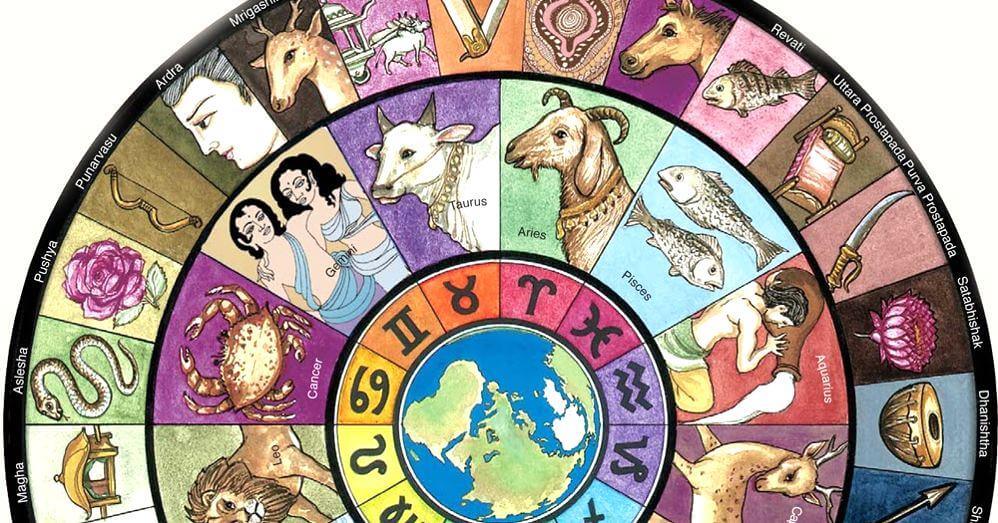In the world of Jyotish (Vedic astrology), nakshatras, also known as lunar mansions, hold a profound influence over personality, life events, and even one’s karmic path. These 27 divisions of the sky, marked by specific fixed stars, are used in Vedic astrology to decode the subtleties of an individual’s life based on the Moon’s position at birth. This article dives deep into the nakshatras, explaining their significance, influence on different life aspects, and how understanding them can bring clarity to personal and spiritual growth.
Introduction to Nakshatras in Jyotish
What are Nakshatras in Vedic astrology?
Nakshatras are 27 unique divisions of the zodiac in Vedic astrology, directly linked to the Moon’s movement through the sky. Unlike the familiar Sun signs in Western astrology, the nakshatras provide a more detailed understanding of a person’s inner world, emotional makeup, and life patterns. These lunar mansions are deeply tied to the Moon’s placement and reveal nuances in character and destiny that traditional zodiac signs may not uncover.
The Meaning of Nakshatras: Exploring Lunar Mansions in Jyotish
Meaning of Nakshatras in Jyotish astrology
The term “nakshatra” derives from the Sanskrit words “naksha,” meaning map, and “tara,” meaning star. Thus, nakshatras map out the stars. Each nakshatra is symbolized by a specific deity and is associated with distinct qualities that influence individuals born under its influence. The deities connected to each nakshatra embody particular powers, and these divine energies flow through the characteristics, traits, and life paths of individuals aligned with them. For instance, the nakshatra “Ashwini” is associated with the Ashwini Kumaras, divine healers, granting those born under it a natural affinity for healing and leadership.
How Nakshatras Influence Personality Traits in Jyotish
How Nakshatras influence personality in Vedic astrology
Each nakshatra affects the psychological and emotional framework of individuals. The Moon, known for governing emotions in Jyotish, holds sway over these nakshatras, directly influencing the mind and behavioral patterns. For example, individuals born under “Rohini” are known for their creativity and charm, often possessing a magnetic personality. On the other hand, someone with their Moon in “Moola” may demonstrate intense determination and a deep-rooted desire to unearth truths. These characteristics vary widely across the 27 nakshatras, making them one of the most insightful tools for understanding the complexity of human nature in Vedic astrology.
The Importance of Nakshatras in Determining Life Events
Nakshatras and life events in Jyotish astrology
Nakshatras do more than shape personality; they are integral in predicting significant life events. In Jyotish, planetary positions in relation to nakshatras can reveal the timing of important occurrences such as marriage, career shifts, and financial success. For instance, “Pushya,” often considered a highly auspicious nakshatra, can indicate success and stability in professional endeavors when activated by planetary transits. Conversely, “Ashlesha,” a more challenging nakshatra, might signal times of personal struggles or karmic lessons that need to be addressed. The precision offered by nakshatras in timing these events makes them essential tools for accurate life forecasting.
Nakshatras and Their Connection to Karma and Spiritual Growth
Nakshatras and karma in Vedic astrology
Nakshatras are deeply woven into the fabric of karmic energy in Jyotish. Each nakshatra brings forward specific karmic lessons, both from past lives and for the current one. For example, “Magha,” connected to ancestral energies, often indicates a person who must address familial karma, while “Revati,” ruled by Pushan, the nourisher, is tied to spiritual guidance and completion of life’s goals. Understanding one’s nakshatra helps identify areas where karmic imbalances exist and provides a pathway for spiritual growth by aligning with the divine energies of that nakshatra.
Exploring the 27 Nakshatras: Their Symbols, Deities, and Characteristics
List of 27 Nakshatras and their meanings
Each of the 27 nakshatras has its own unique symbol, ruling deity, and associated traits that influence those born under its stars. For instance, “Bharani,” symbolized by the Yoni (female reproductive organ), is associated with the deity Yama, the god of death, signifying transformation and the power to endure. On the other hand, “Hasta,” represented by a hand and ruled by the Sun God Savitar, embodies creativity, skillfulness, and control. A thorough understanding of each nakshatra helps decode an individual’s inherent strengths, weaknesses, and the types of life challenges they are likely to face.
Nakshatras and Relationships: Compatibility and Challenges
Nakshatra compatibility in relationships
Nakshatras are crucial in determining relationship compatibility in Jyotish, particularly in marriage. In traditional Vedic culture, the nakshatra of each partner’s Moon is compared to assess their emotional compatibility and the likelihood of harmony in the relationship. For example, individuals with Moon in “Swati” nakshatra, known for independence and adaptability, may face challenges when paired with someone from the “Bharani” nakshatra, which values control and intensity. Nakshatras can also identify potential areas of friction and guide individuals toward more harmonious and fulfilling partnerships by offering insights into behavioral patterns and emotional needs.
Nakshatra Padas: The Four Quarters and Their Importance in Jyotish
Nakshatra Padas and their significance in Jyotish astrology
Each nakshatra is divided into four quarters, known as Padas, each with its own subtle influence. These Padas add an additional layer of refinement to one’s horoscope, often determining the more specific traits and tendencies within the broader nakshatra. For instance, while “Ashwini” as a whole is associated with speed, energy, and new beginnings, its fourth Pada is connected to Pisces, adding a dimension of spirituality and compassion. By analyzing the Pada in which the Moon or other planets are placed, astrologers can offer a more nuanced interpretation of an individual’s character and life path.
Nakshatras and Muhurta: Choosing Auspicious Times for Important Life Events
Nakshatras and muhurta for auspicious events
In Jyotish, nakshatras are fundamental in selecting Muhurta, the auspicious timing for major life events such as marriages, housewarmings, or starting a business. Some nakshatras are considered more favorable than others for specific types of events. For instance, “Rohini,” a fertile and prosperous nakshatra, is ideal for new beginnings, while “Uttara Phalguni” is often selected for weddings due to its association with partnership and stability. Choosing the right nakshatra ensures that the event is blessed with positive cosmic energy, increasing the likelihood of success and long-term happiness.
Nakshatras and Health: Understanding Vulnerabilities and Strengths
Nakshatras and health predictions in Vedic astrology
The nakshatra that dominates at birth can reveal potential health vulnerabilities and strengths. Each nakshatra governs different parts of the body, and understanding the dominant nakshatra can help individuals be aware of health risks and take preventive measures. For example, those born under “Ashlesha” are more prone to nervous system issues, while “Revati” natives may experience digestive problems. By aligning with the health-related attributes of their nakshatra, individuals can focus on specific practices such as diet, exercise, or meditation to support their well-being.
Conclusion: Unlocking the Mysteries of Nakshatras for a Fulfilling Life
Nakshatras are the key to a deeper understanding of one’s personality, relationships, karmic lessons, and spiritual journey in Vedic astrology. By tapping into the unique energies and symbolism of each nakshatra, individuals can unlock hidden potential and align themselves with the cosmic flow, leading to personal growth, success, and a greater sense of purpose.
FAQ: Common Questions About Nakshatras in Jyotish
Q: What is the significance of the nakshatra at birth?
A: The nakshatra where the Moon is placed at birth is a key factor in Vedic astrology for determining personality traits, life events, and karmic influences.
Q: How do nakshatras affect relationships and compatibility?
A: Nakshatras influence emotional compatibility in relationships, particularly in marriage, by examining the Moon’s position and characteristics in each person’s chart.
Q: Can nakshatras predict health issues?
A: Yes, nakshatras provide insights into health strengths and vulnerabilities based on the ruling deities and characteristics of each nakshatra, helping individuals take preventive measures.
Q: How are nakshatras used to choose auspicious timings (Muhurta)?
A: Nakshatras are used in Jyotish to select auspicious times for important life events, ensuring the alignment of favorable cosmic energies for success.
Q: What role do nakshatra Padas play in Jyotish?
A: Nakshatra Padas further refine the traits and destiny of an individual by adding subtle nuances to the influence of the overall nakshatra in a person’s horoscope.





